The BBVA Foundation distinguishes Emmanuelle Charpentier, Jennifer Doudna and Francisco Mojica, instigators of the CRISPR "revolution" in genome editing
- BBVA Foundation Frontiers of Knowledge Award in Biomedicine
- The "simplicity and versatility" of this technique, as the jury describes it, which allows to "cut and paste" DNA cheaply and efficiently, has led to its rapid adoption in laboratories the world over "to understand gene function and treat disease"
- Mojica's research work in the saline marshes of Santa Pola in Alicante laid the foundations for the future field. There, the Spanish scientist discovered DNA repeat sequences which some bacteria use as a defense mechanism to fight off viral infections
- Subsequent work by Doudna and Charpentier transformed his findings into "a universal genome editing tool," in the words of the jury, which has paved the way for therapeutic applications in diseases like cancer or AIDS
MADRID, Jan. 31, 2017 /PRNewswire/ -- The BBVA Foundation Frontiers of Knowledge Award in the Biomedicine category is shared, in this ninth edition, by Emmanuelle Charpentier, Jennifer Doudna and Francisco Martínez Mojica, whose pioneering work has ignited "the revolution in biology permitted by CRISPR/Cas 9 techniques." These tools facilitate genome modification with an unprecedented degree of precision, and far more cheaply and straightforwardly than any previous method. Not unlike today's simple, intuitive word processing programs, CRISPR/Cas 9 is able to "edit" the genome by "cutting and pasting" DNA sequences: a technology so efficient and powerful that it has spread like wildfire round the laboratories of the world, explains the jury, "as a tool to understand gene function and treat disease."
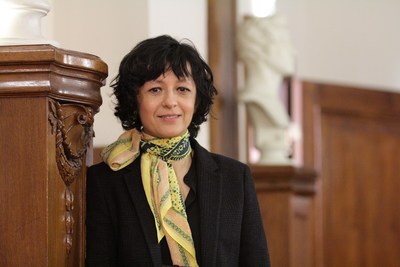
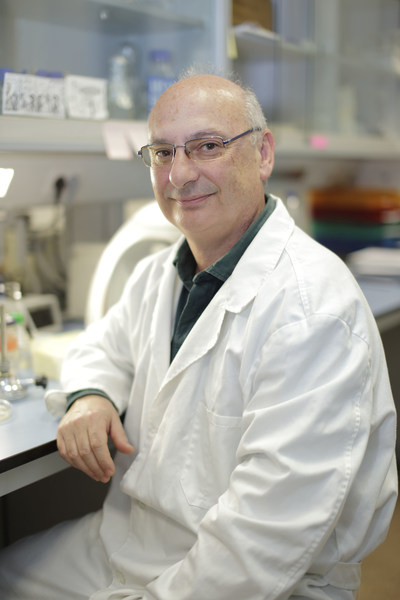
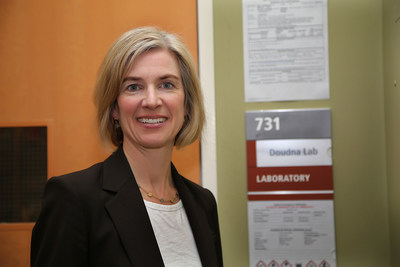
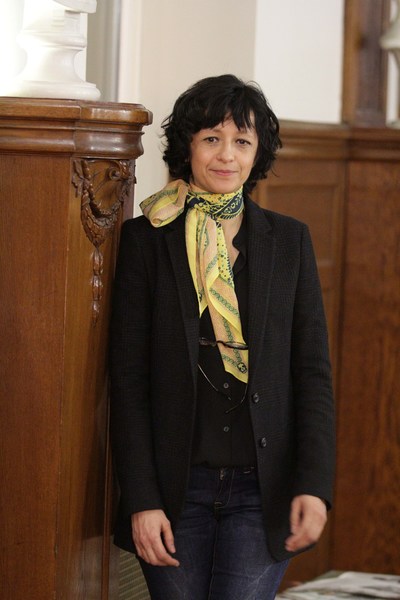
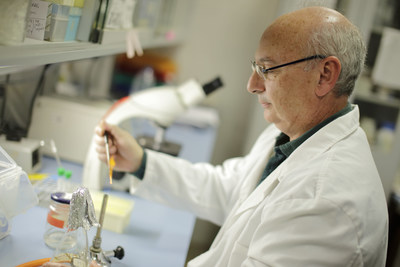
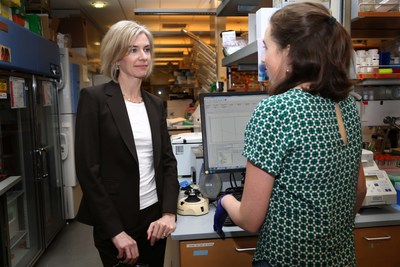
The prize jury, formed by eight European and American experts (see below), described the development of this technique as a triumph of basic research, "driven by sheer curiosity," adds Robin Lovell-Badge of the Francis Crick Institute in London. He and his colleague Dario Alessi, of Dundee University (United Kingdom), were keen to highlight the vision and perseverance of Martínez Mojica in exploring a biological problem which at the time interested no one, but would enable the flowering of a new revolutionary technique.
The jury's citation traces its history: "Martínez Mojica identified CRISPR sequences and postulated their role as an adaptive defense system against viruses; Charpentier and Doudna elucidated the molecular mechanism of CRISPR/Cas 9 action and demonstrated its potential use as a universal tool for genome editing, paving the way for a multitude of applications in essentially any organism."
Since it came into play as a genome editing tool in 2012, CRISPR/Cas 9 has been used to search for new treatments against numerous diseases – including cancer and AIDS – as well as to breed new plant varieties and in environmental applications. The technique has cut the time required to voluntarily alter the genome from years to a matter of weeks, and many have hailed it as the democratization of genetic editing, because it puts the technique within reach of any molecular biology lab.
Laboratories in China and the United States plan to shortly use it in clinical trials in humans as a treatment against diverse types of cancer. If these trials support the safety of gene editing in humans, we may soon see CRISPR/Cas 9-based treatments being tested for use against multiple ailments.
An origins story in the salt marshes of Santa Pola
The revolutionary gene editing technique has Spain as its birthplace. Francisco Juan Martínez Mojica (Elche, 1963), a microbiologist at the University of Alicante, gave CRISPR its name, and his was the vital basic discovery, in 2003, that set its development in motion.
In 1989, Martínez Mojica joined the Microbiology group at the University of Alicante with a contract to measure water quality along the region's beaches. He had just begun work on a PhD thesis focusing on the microorganism Haloferax mediterranei, isolated by his doctoral advisor in the salt marshes of Santa Pola. Mojica's mission was to identify the molecular mechanisms that allowed H. mediterranei to adapt to changing concentrations of salt. But in the microbe's genome he discovered something more – genetic sequences repeating at regular intervals of which he could find no mention in the scientific literature. Though intrigued by this biological enigma, it was not until the mid-1990s, with his own laboratory up and running, that he could start work on elucidating the purpose of these strange repeats.
He turned to bioinformatics for help in his investigations in the absence of any funding support. This, he assures now, was hardly surprising, since "it's extremely risky to start exploring something of this kind, without any idea where it might lead; when you start from something as rudimentary as repeat sequences in the genome of a bacteria… I perfectly understand why evaluators, with numerous proposals to choose from, did not put mine at the top of their list."
But Mojica pressed on despite the lack of resources, profiting from the recent publication of the full genomes of diverse microorganisms. Sifting through the new open-access databases, he discovered that regularly spaced repeat sequences occurred abundantly throughout the microbial world, pointing to "an ancestral origin and major biological relevance."
He finally established their function in 2003, but could not get his findings published until 2005, because leading journals like Nature and PNAS rejected the paper without further review, alleging that it lacked interest.
The repeat sequences, it turns out, form part of the immune system of microorganisms, a defense mechanism that remembers and repels aggressors, and can pass the memory on to the next generation. Their CRISPR, as such, acts as a kind of genetic vaccine: the spaces between the repeat sequences carry fragments of the aggressor species' DNA; molecular signatures that can be recognized if they attack again. The "Eureka" moment when Mojica realized this was "by a long way the happiest of my scientific life. The discovery that microorganisms, like us, are equipped with a defense system was entirely astounding and unexpected."
This finding sparked a growing interest in CRISPR, with groups the world over competing to describe its exact mode of functioning. It was the subject of its own world congress in Berkeley, in 2008, where Mojica first coincided with Jennifer Doudna (United States, 1964) of the University of California (Berkeley, United States), already a leading researcher in her field. No one had yet thought to develop it as a precision genome editing technique. Which is where Doudna and Charpentier came in.
Genetic "cut and paste"
Emmanuelle Charpentier (Juvisy-sur-Orge, France, 1968) is currently Director of the Max Planck Institute for Infection Biology (Berlin, Germany) and a professor at the University of Umeå (Sweden). In the late 2000s, she was looking at the gene-activation function of a specific type of molecule, an essentially basic line of work that led her to discover a key molecule in the CRISPR/Cas 9 system. Her attempts to solve its three-dimensional structure encouraged her to contact Doudna in 2011, and the two women decided to join forces.
By 2012, Charpentier and Doudna had managed to artificially reproduce the CRISPR/Cas 9 system. In nature, CRISPR/Cas9 destroys the phages attacking microorganisms by slicing their DNA; specifically, the CRISPR structure – the repeat sequences and virus fragments – serve as a guide which steers the "scissors" – the Cas 9 enzyme – to the specific DNA region targeted for cleaving. Charpentier and Doudna reproduced this mechanism in the laboratory, and were able to demonstrate its use as "a powerful genome-editing tool that can be programmed to recognize any fragment of DNA," Charpentier explains.
The technique not only cuts DNA with exquisite precision, it also pastes it back in, making use of the DNA repair mechanisms naturally present in the cell. But before such repair, scientists may, if they wish, introduce new sequences. The "potential" of this capability for use in genome editing was noted by the authors in their Science paper of 2012.
"A tree yielding many fruits"
Charpentier expressed her delight at sharing the award with Doudna and Mojica, while declaring herself convinced of the immense biomedical potential of the CRISPR technique: "One promising avenue is its indirect use in biomedical experiments, where it can serve to pinpoint defective genes in animal models and thereby identify effective targets for new therapies. The technique will also help us correct harmful mutations in future gene therapy treatments."
Doudna shares her enthusiasm about the technique's promise in biomedicine "both for its potential to advanced fundamental research about cells and how they function, but also as a tool for curing genetic disease." The Berkeley researcher predicts that some of its first applications "will target the DNA mutation that causes sickle-cell anemia, and also diseases that affect the eyes."
Martínez Mojica adds that he "could never imagine" the revolution that would be ignited by his discovery. Today, the scientist combines basic research work on microorganism CRISPR/Cas 9 with a busy teaching schedule. He refers wryly to one unexpected side effect of the CRISPR/Cas 9 boom: "I give talks, I speak to journalists… I have no time to just sit down and think, the way I used to!"
Even so, the scientist declares himself "thrilled" at receiving the Frontiers of Knowledge Award. And uses the occasion to champion the cause of basic science: "There can be no advances without funding for basic research; if you don't know how an organism functions, you can't fight disease; if you don't understand a bacterial mechanism, you will never get the idea that leads to a gene-editing technique… Each basic science project is a tree that yields not one but many fruits."
As to the debates arising around CRISPR's possible use in modifying the DNA germline – that is, the precursor cells of ova and spermatozoa – or its use to improve human design rather than to cure disease, Professor Doudna says that "I have long felt that the bioethical aspects in gene editing need to be discussed." The Californian scientist has taken part in various talks and meetings on this subject with colleagues from around the world, "because I want to be sure that the future applications of this technology take into account both the societal impacts of gene editing and also their potential to affect the future of our planet."
Bio notes on the three laureates
Emmanuelle Charpentier (Juvisy-sur-Orge, France, 1968) studied biochemistry and microbiology at the Université Pierre et Marie Curie in Paris before completing a PhD in Microbiology at Institut Pasteur. From 1996 to 2002, she continued her training at the Rockefeller University, New York University Langone Medical Center and the Skirball Institute of Biomolecular Medicine (all in New York) and at St Jude Children's Research Hospital in Memphis, Tennessee. She then returned to Europe to establish her own research group at the Max F. Perutz Laboratories of the University of Vienna, and later took up the post of Associate Professor in the Laboratory for Molecular Infection Medicine Sweden at the University of Umeå (Sweden), where she was also Visiting Professor in the Umeå Centre for Microbial Research. In 2013, she was awarded a professorship at the Helmholtz Centre for Infection Research, Braunschweig, and in 2014 became Alexander von Humboldt Professor at Hannover Medical School. Since 2015, she has headed the Max Planck Institute for Infection Biology in Berlin, while continuing to visit at the University of Umeå.
Jennifer Doudna (Washington D.C. United States, 1964) graduated cum laude in biochemistry from Pomona College (1985) then went on to earn a PhD in Biological Chemistry and Molecular Pharmacology at Harvard Medical School (1989). From 1989 to 1994, she pursued postdoctoral work at Massachusetts General Hospital, Harvard Medical School and the University of Colorado. Between 1994 and 2002, she held a series of positions in the Department of Molecular Biophysics and Biochemistry at Yale University, latterly as Henry Ford II Professor (2000-2002). Since then, Doudna has been attached to the University of California, Berkeley, where she is currently a professor in the departments of Chemistry and Molecular and Cell Biology. She also holds the Li Ka Shing Chancellor's Chair in Biomedical Sciences at this same center, is Executive Director of the Innovative Genomics Initiative and chairs the Chancellor's Advisory Committee on Biology. She has been a researcher with the Howard Hughes Medical Institute since 1997.
Francisco Martínez Mojica (Elche, Alicante, 1963) earned a degree in biology from the University of Valencia before moving to the nearby University of Alicante in 1989 to begin his doctoral studies. After obtaining his PhD in 1993, he pursued his research into bacterial physiology at the University of Utah (Salt Lake City, United States, 1993) and into gene regulation at the University of Oxford (United Kingdom, 1995). In 1997, he returned to the University of Alicante, where he continues to this day as Associate Professor of Microbiology and Principal Investigator of the Molecular Biology research group, which he himself founded.
About the BBVA Foundation Frontiers of Knowledge Awards
The BBVA Foundation has as its core objectives the promotion of scientific knowledge, the transmission to society of scientific and technological culture, and the recognition of talent and excellence across a broad spectrum of disciplines, from science to the arts and humanities.
The BBVA Foundation Frontiers of Knowledge Awards were established in 2008 to recognize outstanding contributions in a range of scientific, technological and artistic areas, along with knowledge-based responses to the central challenges of our times. The areas covered by the Frontiers Awards are congruent with the knowledge map of the 21st century, in terms of the disciplines they address and their assertion of the value of cross-disciplinary interaction.
Their eight categories include classical areas like Basic Sciences and Biomedicine, and other, more recent areas characteristic of our time, ranging from Information and Communication Technologies, Ecology and Conservation Biology, Climate Change and Economics, Finance and Management to Development Cooperation and the innovative artistic realm that is Contemporary Music.
The BBVA Foundation is aided in the organization of the awards by the Spanish National Research Council (CSIC), the country's premier public research agency. As well as designating each jury chair, the CSIC is responsible for appointing the technical evaluation committees that undertake an initial assessment of the candidates put forward by numerous institutions across the world, and draw up a reasoned shortlist for the consideration of the juries.
Biomedicine jury and technical committee
The jury in this category was chaired by Angelika Schnieke, Chair of Livestock Biotechnology in the Department of Animal Sciences at the Technical University of Munich (TUM) (Germany). The secretary was Óscar Marín, Professor of Neuroscience and Director of the Medical Research Council (MRC) Centre for Developmental Neurobiology at King's College London (United Kingdom). Remaining members were Dario Alessi, Director of the Protein Phosphorylation and Ubiquitylation Unit, a Medical Research Council unit in the School of Life Sciences of Dundee University (United Kingdom); Lélia Delamarre, Group leader in the Department of Cancer Immunology at biotech company Genentech, in California (United States); Robin Lovell-Badge, Head of the Laboratory of Stem Cell Biology and Developmental Genetics at the Francis Crick Institute (United Kingdom); Ursula Ravens, Senior Professor in the Department of Physiology in the Carl Gustav Carus Medical School at the Technical University of Dresden (TUD) (Germany); Ali Shilatifard, Chair of the Department of Biochemistry and Molecular Genetics and Robert Francis Furchgott Professor at Northwestern University, in Chicago (United States); and Bruce Whitelaw, Deputy Director and Head of the Developmental Biology Division at The Roslin Institute, University of Edinburgh (United Kingdom).
The CSIC technical committee was coordinated by Ana Guerrero, the Council's Deputy Vice President for Scientific and Technical Areas, and formed by: José Luis Martínez, Research Professor in the National Center for Biotechnology (CNB); Juan Lerma, Research Professor in the Institute of Neurosciences (IN); Santiago Lamas, Research Professor in the Center for Molecular Biology "Severo Ochoa" (CBM); María Ángeles Ros, Research Professor in the Institute of Biomedicine and Biotechnology of Cantabria (IBBTEC); and Dolores González, Coordinator of the Biology and Biomedicine Area and Research Professor at the Institute of Parasitology and Biomedicine "López Neyra" (IPBLN).
Calendar of upcoming award announcements
| Ecology and Conservation Biology |
Tuesday, February 7, 2017 |
| Contemporary Music |
Tuesday, February 14, 2017 |
| Economics, Finance and Management |
Tuesday, February 21, 2017 |
| Development Cooperation |
Tuesday, February 28, 2017 |
Previous awardee in this category
The Biomedicine award in last year's edition was shared by neuroscientists Edward Boyden, Karl Deisseroth and Gero Miesenböck, for developing and refining optogenetics, a technique that employs light to activate and inactivate proteins in the brain cells, making it possible to modulate their activity with unprecedented precision.
Five of the 79 winners in earlier editions of the BBVA Foundation Frontiers of Knowledge Awards have gone on to win the Nobel Prize. Shinya Yamanaka, the 2010 Biomedicine laureate, won the Nobel Prize in Medicine in 2012; Robert J. Lefkowitz, awardee in the same Frontiers category in 2009, won the Chemistry Nobel in 2012. In Economics, Finance and Management, three Frontiers laureates were later honored with the Nobel: Lars Peter Hansen, winner of the Frontiers Award in 2010 and the Nobel Prize in 2013; Jean Tirole, Frontiers laureate in 2008 and Nobel laureate in 2014; and Angus Deaton, 2011 Frontiers laureate and Nobel laureate in 2015.
| LAUREATE'S FIRST DECLARATIONS AND IMAGES A video recording of the new laureate's first interview on receiving news of the award is available from the Atlas FTP with the following coordinates: Server: 5.40.40.61 Username: agenciaatlas5 Password: premios The name of the video is: "PREMIO BIOMEDICINA" In the event of connection difficulties, please contact Alejandro Martín at Atlas: Mobile: +34 639 16 58 61 E-mail: [email protected] |
For more information, contact the BBVA Foundation Department of Communication and Institutional Relations (+34 91 374 5210/+34 91 374 3139/+34 91 374 8173, [email protected]) or visit www.fbbva.es
SOURCE BBVA Foundation
WANT YOUR COMPANY'S NEWS FEATURED ON PRNEWSWIRE.COM?
Newsrooms &
Influencers
Digital Media
Outlets
Journalists
Opted In
Share this article